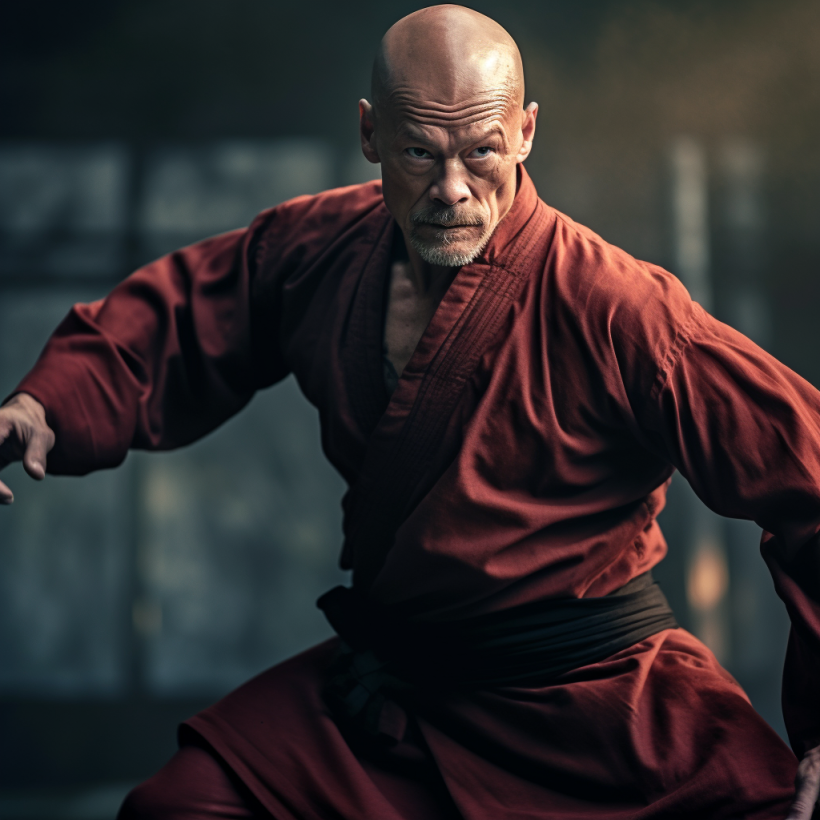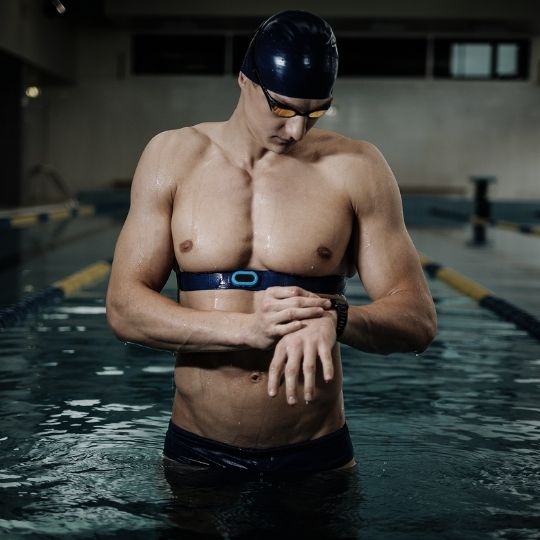
Does Alcohol Have Any Benefits?
In the world of martial arts (and fitness in general), the question “Does alcohol have any benefits?” often sparks heated debates. As a middle-aged martial arts enthusiast, I’m always looking for ways to balance my passion with a healthy lifestyle. This brings to mind Jackie Chan’s iconic movie, “The Legend of Drunken Master,” where the protagonist, Wong Feihung, navigates a similar balancing act. In the film, Feihung discovers that consuming alcohol enhances his martial arts skills, giving him almost superhuman agility and strength. However, this power comes with a price, as he struggles with the destructive aspects of alcohol.
The movie brilliantly portrays this dilemma through a poignant line delivered by Feihung’s father, Wong Keiying: “A boat can float on water, but it can sink in it too.” This metaphor resonates deeply, as it encapsulates the dual nature of alcohol – a substance that can both aid and impair.
Recently, I read an intriguing article by Chris Masterjohn, which sheds light on alcohol’s complex role in health. In our latest “Fit To Fight” series installment, we aim to distill Masterjohn’s key insights, exploring how they intersect with our journey as martial artists. This series is dedicated to unearthing the synergy between ancient practices and modern science, guiding us toward a more natural way of living. We aim to enhance our physical and mental well-being by integrating these insights into our daily routines.
Chris’s original article is a little dense if you’re not as excited about nutrition and biology as I am, so I want to present just some of the key points to consider when it comes to alcohol consumption as guys who care about our health, without getting as deep into the biochemistry.
We’ll explore the potential health benefits and risks of alcohol consumption, keeping it straightforward and relatable. This discussion is crucial for us martial arts enthusiasts who want to maintain peak physical and mental condition. We’ll look at how moderate alcohol intake might affect our overall well-being, body composition, and even our martial arts practice. It’s about finding that sweet spot – much like Wong Feihung in “The Legend of Drunken Master” – where we can enjoy the potential benefits of alcohol without letting it tip the scales towards the negative.
Even a Little Alcohol Could Harm Your Health?
In recent discussions surrounding alcohol consumption and health, prominent figures like Petter Attia and Andrew Huberman have cited new research to support the stance that there is no safe level of alcohol consumption. This perspective gained further attention with a New York Trash, er… I mean “Times” article titled “Even a Little Alcohol Could Harm Your Health.” However, Dr. Chris Masterjohn presents a counterargument in his detailed analysis. He scrutinizes the wide array of existing evidence, particularly focusing on moderate alcohol consumption and its impact on all-cause mortality.
Masterjohn argues (and I agree) that all-cause mortality is the most comprehensive metric for evaluating the overall effects of a substance or behavior on health. This is because it encapsulates the net outcome of many complex health influences, both positive and negative. His examination reveals a nuanced view, suggesting that while excessive alcohol intake is undoubtedly harmful, moderate consumption may have some protective effects against certain health conditions.
This pushback against the notion of ‘no safe level’ is rooted in a broader evaluation of research, providing a more balanced understanding of alcohol’s impact on health. Masterjohn’s approach appeals by offering a clear, evidence-based perspective that challenges simplified narratives about alcohol consumption and health.
In full disclosure, personally, I have a beer or two with dinner most nights. I’m normally a fan of Weissbier (wheat beer), but it’s hard to find a good wheat beer in the US. I was buying a “local” brand, Four Peaks, until I learned they were owned by the same parent company as Bud Light, and well, if you know, you know, so lately, I’ve been drinking Sam Adams, which I really enjoy, so it was a win-win.
Likewise, Masterjohn is a Greek Orthodox Christian, and wine plays an important role in the sacraments of that faith, so the reader, at this point, should be fully aware of the personal biases of both myself and Dr. Masterjohn. With that said, let’s continue.

Alcohol’s SURPRISING Role in Your Health and Longevity
Alcohol as a Macronutrient and Toxin
Dr. Masterjohn, challenges the currently popular belief among “biohackers” that no level of alcohol consumption is safe. Instead, he presents alcohol as a unique entity – a macronutrient, toxin, and drug. Like proteins, fats, and carbohydrates, alcohol is metabolized to produce energy. However, it also generates acetaldehyde, a toxic byproduct.
Masterjohn explains that while alcohol provides usable energy, its metabolism in the body is a double-edged sword. It’s not just about the calories; it’s about understanding how alcohol is broken down and the implications of its byproducts. For us martial artists, this means recognizing alcohol’s dual role in our diet and its potential impact on our training and recovery.
Hormetic Effects of Alcohol
The concept of hormesis, as discussed by Masterjohn, is fascinating. It suggests that low doses of a toxin, like alcohol, can actually be beneficial, much like the stress of exercise. This is supported by studies showing that moderate alcohol consumption can lead to increased testosterone levels in rats and enhanced antioxidant defenses in cells. For us in the martial arts community, this could mean that a moderate intake of alcohol might not just be harmless but potentially beneficial, enhancing our body’s ability to recover from hard training.
Another example of the beneficial hormetic effect of moderate alcohol consumption is it’s effects on our vitamin A status. When alcohol is metabolized in the body, it goes through a process that involves enzymes also used in activating vitamin A. This means that consuming alcohol in moderation can potentially upregulate these enzymes, thereby enhancing the activation of vitamin A. Vitamin A is crucial for maintaining healthy vision, skin, and immune function. It works in partnership with vitamin D to support the immune system, helping to protect the body against infections and diseases. However, it’s important to remember that this potential benefit is linked to moderate consumption, as excessive alcohol intake can have negative health impacts because there’s an upward limit of how many of any given enzyme the body is able to produce at one time.
Alcohol’s Impact on Health
Masterjohn’s review of observational studies reveals a compelling pattern: moderate alcohol consumption, defined as up to one drink per day, is associated with reduced risks of heart disease, certain cancers, diabetes, dementia, Alzheimer’s, and chronic kidney disease. This hormetic pattern, where moderate amounts yield benefits while excess leads to harm, is crucial for us to understand. As martial artists, we strive for balance in all aspects of life, and this extends to our alcohol consumption. It’s about finding that middle path where alcohol can be a part of a healthy lifestyle without overshadowing the benefits of our training and discipline.
Disease-Specific Alcohol Consumption Levels
Delving deeper, Masterjohn highlights how alcohol’s effects vary with different diseases. For instance, a daily drink might reduce the risk of osteoporotic fractures but increase the overall risk of fractures due to accidents under the influence. This nuanced view is essential and also underscores one of the shortcomings of epidemiology in general. The data is the data, but the interpretation of the data is largely dependent on the quality of the questions you ask about that data.
Personalized Approach and Variables
Finally, Masterjohn emphasizes the importance of a personalized approach to alcohol consumption. He points out that individual responses to alcohol can vary greatly due to genetic and mitochondrial differences. This means that what works for one person might not work for another. For us, this translates to a call for mindfulness and moderation in our alcohol intake. It’s about listening to our bodies and observing how alcohol affects our training, recovery, and overall well-being. (Getting some semi-regular blood work done doesn’t hurt either.)
Masterjohn advises against alcohol for those with a history of alcoholism and suggests tailoring alcohol intake to personal health goals and lifestyle.
Alcohol and Body Composition in Martial Arts
For martial artists, a higher bodyweight is generally an advantage, specifically when it comes to self-defense, but for those in competitive realms, body weight and composition are critical factors. This brings us to an important aspect of alcohol consumption: its impact on body composition. Remembering that alcohol is a macronutrient, it’s essential to consider that it adds extra calories to our diet. In the world of weight class sports like competitive martial arts, where every calorie counts, understanding this is crucial.
Liquid calories, like those from alcoholic beverages, are often a primary source of excess calories. These liquids leave the stomach quickly, leading to a faster consumption rate and, potentially, a higher overall calorie intake. It’s important to note that the body cannot store calories from alcohol. As a result, alcohol is burned first by the body, causing more calories from carbohydrates and fats to be stored as fat. This is a key consideration for martial artists aiming to maintain or achieve a certain weight class or body composition.
If your current body composition is not where you want it to be, reducing or eliminating alcohol, like any other liquid calories, might be a wise choice until you reach your desired body state. Conversely, for those struggling to consume enough calories for weight gain, such as during a bulking phase, liquid calories can be beneficial, and there’s no need to avoid alcohol strictly.
For martial artists following a ketogenic diet, the type of alcoholic beverage becomes even more important. Beers and wines, rich in carbohydrates, can disrupt ketosis, while distilled spirits, lower in carbs, do not interfere with ketosis and could even be advantageous in moderation. This nuanced understanding of alcohol’s role in diet and body composition is vital for martial artists who are serious about their performance and health.
Alcohol and Mindfulness: Balancing Act for the Modern Practitioner
For those serious about martial arts as a way of life, the connection between physical ability and mental clarity is undeniable. My journey with I Liq Chuan, The Martial Art of Awareness, has deeply ingrained in me the importance of this connection. This art form, centered around the cultivation of mindfulness and internal awareness, highlights how integral a clear and focused mind is to mastering not just our time on the mats, but our lives off the mats as well. As we delve into the effects of alcohol on mindfulness, this connection becomes even more pertinent, reminding us of the delicate balance we must maintain to achieve harmony in both our physical practice and our mental state.
In the realm of mindfulness and spiritual practices, the impact of substances like alcohol is a topic of profound significance. The Buddha, revered for his teachings on mindfulness and awareness, mandated that monks must abstain from all intoxicants, including alcohol. This directive underscores the importance of mental clarity and the potential hindrances substances can pose to achieving a heightened state of awareness.
However, it’s intriguing to note that the Buddha himself, known to suffer from back pain, occasionally turned to medicinal herbs for relief. Some accounts from the Sutras suggest these herbs could have included cannabis. Despite this, the Buddha was acutely aware of the effects these substances had on his mental state. He reportedly refrained from teaching or speaking until their effects had subsided, demonstrating a deep understanding of the delicate balance between medicinal use and mental clarity. I remember my time on a meditation retreat with Venerable Jiru of the Mid-America Buddhist Association, during which he instructed us that, in his experience, taking so much as an aspirin was enough to interfere with his deep state of mental stillness and clarity.
For laypeople, the context is different. We are not bound by monastic codes, allowing us a different perspective on intoxicants, particularly alcohol. Recent research indicates that moderate alcohol consumption may have protective effects against dementia, suggesting that in controlled amounts, alcohol might help preserve our cognitive function over the long term. However, this doesn’t negate the fact that alcohol, like any substance, can alter our state of mind and impact our mindfulness practice.
In the words of the great economist and social commentator Thomas Sowell, “There are no solutions, only tradeoffs.” Moderate alcohol consumption might protect us from cognitive decline in the future, but it means never achieving the most profound mental states achievable through mediation, the Janha states.
This is especially crucial when participating in intensive mindfulness retreats or practices, where the goal is to achieve the highest level of mental clarity and awareness. In such settings, abstaining from all substances that alter perception, including alcohol, becomes essential.
Conclusion
The exploration of alcohol’s role in our lives has been a journey of discovery and balance. We’ve delved into various aspects, from the dual nature of alcohol as both a macronutrient and a toxin, to its hormetic effects and impact on health. Dr. Chris Masterjohn’s insights have provided us with a nuanced understanding of alcohol’s complex role in our health, challenging the notion that no level of consumption is safe and highlighting the potential physiological benefits of moderate intake.
Our journey, much like Wong Feihung’s in “The Legend of Drunken Master,” is about finding equilibrium. We’ve learned that alcohol, in moderation, can potentially offer health benefits, such as reduced risks of certain diseases and improved antioxidant defenses. However, this comes with the caveat of its impact on body composition and mindfulness. As martial artists, where every calorie and mental state counts, understanding the implications of alcohol on our body composition and mindfulness is crucial. We’ve seen how liquid calories from alcohol can affect our weight and body composition goals, and how mindfulness, a core principle in martial arts, can be influenced by our consumption choices.
The teachings of the Buddha, emphasizing the importance of mental clarity, remind us of the need for discipline in our approach to alcohol. While we, as laypeople, have more flexibility than monks, the principle of mindfulness remains paramount. We’ve recognized that while moderate alcohol consumption might not significantly impair cognitive function, it’s essential to be mindful of its effects on our mental state, especially during intensive mindfulness practices.
As we conclude this exploration, it’s clear that the relationship between alcohol, health, and martial arts (unlike yin and yang) is not black and white. It requires a personalized approach, considering individual health goals, body composition, and mental well-being. The key lies in discipline, self-awareness, and understanding how alcohol fits into our broader values and priorities. By embracing this balanced approach, we can continue to pursue our martial arts journey with vigor, health, and mindfulness, ensuring that our choices align with our goals of achieving optimal physical and mental health.

Read More!
- Why Hand-to-Hand Combat Still Matters in the Firearm Era
- What is a Kung Fu Master Called?
- Woman Fight’s Off Her Attacker At The Gym!
- Bruce Lee’s Real Fights: The True Stories Behind the Legend
About the Author

Ashe Higgs, I Liq Chuan Master Instructor & L2 Nutrition Coach
Ashe is a highly skilled martial arts instructor and certified nutrition coach with over two decades of experience in the field. He holds a Master Instructor certification in I Liq Chuan under Sam FS Chin, making him one of only several individuals worldwide to hold the title. He has taught classes and workshops worldwide and is passionate about helping others achieve their fitness and wellness goals.
With a background in full-contact fighting and a Level 2 certification from Precision Nutrition in nutrition coaching, Ashe is a well-rounded expert in the fields of martial arts. In addition to his expertise, he has a wealth of experience in teaching and mentoring others. He has a natural ability to connect with his students and inspire them to reach their full potential.
Disclaimers & Conflicts of Interest
I am not a doctor, and the information provided should not be considered medical advice. The information provided is for educational and informational purposes only and should not be used as a substitute for professional medical advice, diagnosis, or treatment. Consult your doctor or a qualified healthcare professional before making any changes to your diet, exercise routine, or lifestyle.
Please note that some of the links provided in this content may be affiliate links, meaning that I may receive a small commission if you purchase through them. However, please rest assured that any products or services recommended are based on my personal experience and belief in their value. I only recommend products or services that I have personally used and believe in.
 Fit To Fight is an ongoing series that explores the intersection between ancient practices and modern science.
Fit To Fight is an ongoing series that explores the intersection between ancient practices and modern science.
























































